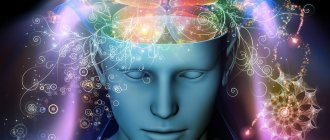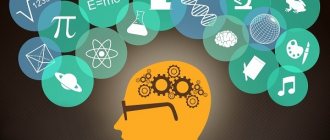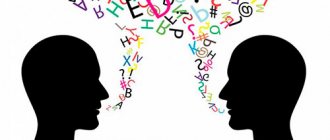Memory is one of the mental processes in the human body, thanks to which information is accumulated, studied and remembered. Thanks to this concept, we can talk about the development of experience and the ability of the brain to recreate remembered elements at the right time.
Memory influences emotions and feelings, developing a person’s reactions to the environment, forming values and life position. The process can be divided into two components:
- Life experiences that reflect how the world has shaped a person.
- Personal observations and experiences.
Information can be stored in several “buffers”, depending on how it was received, what emotions and memories accompanied the person at that moment.
Types of memory
Psychologists identify several subtypes, each of which cannot exist separately, but is directly related to the others.
These are complex brain functions that scientists and doctors have been studying for centuries. Now in the mental system there is:
| Memory type | a brief description of |
| Sensory | Instant imprint of information and facts on the peripheral parts of the analyzers. Can be divided into iconic and echoic memory. |
| Short-term | A work process during which only a small part of the entire semantic flow is absorbed. In order for the volume to be large, it is necessary to train the sensory organs. |
| Secondary | Memory is based on personal experience and experienced emotions. Moments associated with certain sensations are remembered. It is divided into declarative and procedural processes. |
| Memory for distant events | The ability to remember certain facts and events on a subconscious level. The same emotions as at the moment of remembering will help to evoke memories in the future. The process is spontaneous and is not completely controlled by a person. It can be either short-term or long-term. |
Storing information is possible due to the use of different types of memorization. Thanks to analyzers on the temporal lobes of the cerebral cortex, processes of renewal and repetition of what has already been seen or heard occur.
A close connection with neurons allows not only to reproduce information, but also to convey an emotional background. There are several mechanisms for retrieving information from memory.
Long-term memory
Long-term memory allows the brain to store information for a long time. This type of memory is considered almost permanent; everything in it depends on the consolidation (unification) of what is remembered.
If the information is an object of true attention, it is stored, otherwise it is lost. Information deemed suitable for reuse is transferred from short-term memory to long-term memory. The latter serves as a repository of firmly assimilated data. It seems its volume is unlimited.
Scientists believe, and a practice report can be ordered on this topic, that in long-term memory, data that requires long-term storage is contained in encoded form. It contains various “sinks” of information: a person’s knowledge of the world around him and scientific knowledge (semantic memory), his biography (episodic memory), motor skills and content that is never forgotten (procedural memory).
In accordance with the type of storage and content of information, long-term memory is divided into several types.
Touch type
A type of memorization that is based on the influence of stimuli on the senses. Can be long-term if the irritants are strong. The process is not perceived separately from other types, because it combines the complex work of not only the cerebral cortex, but also the nervous system and the body as a whole.
A feature of the species is the ability to retain memories after the stimulation has stopped. Sensory memory is a complex process that facilitates the rapid acquisition of facts.
Between this and the short-term type of the described process there is an intermediate element - RAM. It allows you to perform an action or procedure on a mechanical level, without thinking about the details of execution. This sensory type of memory is associated with physical processes. As the work progresses, some elements may be forgotten. If information affects the cerebral cortex, then parts of operational memory become short-term.
There are several levels in the structure of the sensory view:
- Direct. This includes sensory memory, which consists of two additional elements.
- Short term.
- Long-term.
Regardless of what type of memory predominates in terms of perception and processing of information, it can be trained and the stock of facts can be increased. And drawing up the correct classification of the material allows you to quickly find what you need.
Peculiarities
Sensory memory is the primary stage of memorization. It operates at the level of receptors that perceive any irritation from the external world or internal environment and convert them into nerve signals. Information leaves instant imprints on the peripheral areas of analyzers. The storage time for information traces is insignificant. The material is processed within 0.25-0.5 s. If during this time the data has not progressed further, then it is forgotten, and the sensory register is replenished with new signals. Information is being sifted out.
This type of memory does not create any obstacles to memorizing large information blocks. A distinctive feature is the unlimited capacity for stored facts. The process of capturing all information occurs continuously. The speed at which information is received is so high that the information does not have time to be processed at this stage. Illusions are created in thoughts. For example, there is no movement on the TV screen, but the pictures replace each other so quickly that the illusion of movement appears.
Thus, sensory memory is characterized by very short-term storage of incoming material, which immediately passes to another subsystem or is lost without a trace. At this stage, the information is saved unchanged. They cannot be delayed, sharpened or played back. It is impossible to consciously control processes that occur at the sensory level of perception. Such memory functions during eye movements and during blinking, providing a familiar perception of the world.
Iconic memorization
Types of sensory memory consist of visual and auditory memory. The first type is holistic portrait memorization and recording of information. Refers to long-term memory, since in the future images can serve as additional pointers for recreating a particular situation. The emotional background influences the iconic type.
In order to be able to accumulate new images and remember details, it is necessary to clear old emotions. Psychologists advise choosing for yourself a number of memories that cause unpleasant emotions or pity, and considering the reasons for their appearance, drawing conclusions and letting go of the situation. Along with the emotions, the images will also go away, thereby making room for new ones.
In the case of a high level of development of visual sensory memory, we can talk about the effect of reverse masking. The bottom line is that the codes of the image reach the cerebral cortex in a matter of milliseconds, and then in other images the person sees the features of the previous one.
This makes it possible to increase the amount of memorized information and constantly expand the boundaries of the visual field, because on a subconscious level the brain will “think out” the situation.
Echoic type
The basis of memorization is auditory perception of information. An effective technique, especially if there are no additional distracting elements. Unlike the visual type, there is no way to compare facts with images or emotions. Voice timbre, rhythm and strength are important for memorization. The ability to reproduce what was previously heard depends on the speed of information processing.
To enhance the memorization effect, scientists recommend accompanying the auditory type with tactile sensations so that information is connected with sensations. Data recording in this case will take place through the somatosensory system.
How not to forget
Sensory memory is the ability to remember a large amount of information through reference to the senses. But in the process of studying and processing, most of the facts are forgotten.
To prevent this from happening, psychologists advise sticking to simple but effective methods:
- Repetition. It is recommended to repeat new facts three to four times over several hours. It is important to switch to other points in the process and then return to the desired source again.
- Forgetting occurs faster in the first few days than in other periods. If you connect facts with images or emotions and remember them a week later, the information will be absorbed faster.
- Repeat before forgetting begins. It is much easier to retain information in your head if you concentrate on memorization in the first weeks.
- Associations. Drawing up a mental flow for the desired fact allows you to remember it for a long time. What kind of sensory memory is possible without visualizing imaginary images?
Performing simple actions will provide an opportunity not only to remember more, but also to learn how to systematize the acquired knowledge. Developing short-term sensory memory is an excellent opportunity to strengthen memory processes.
Short-term memory
Short-term memory, also called immediate or primary, serves to remember for a very short time. Its task is to repeat certain information (for example, a telephone number being dictated at the moment) and analyze it for further storage in long-term memory.
Its recording capabilities are very small. Without a strong-willed effort aimed at preserving information, it is lost. This practical memory is designed to instantly recall memories.
Accordingly, it has a limited volume (maximum seven to eight units) and limited storage time (at most two to three minutes). New information immediately displaces and replaces the old.
Main Factors
Sometimes it’s impossible to remember what you need, a person thinks about something else and cannot concentrate on the work of the brain. Psychologists identify several elements that influence the speed and quality of memorization. Sensory memory is a close relationship between the senses and operating factors:
- Mechanical and conscious memorization. The first option provides less benefit than the second. It is necessary to think about what needs to be remembered, to focus on details.
- Comparison. The process helps you focus on a specific image and highlight features.
- Systematization. When information relates to structure or type, it is much easier to master the volume through the desired category.
Memory training, using various techniques and focusing on details will help over time not only increase the ability to memorize, but also improve the quality of reproduction.
Explicit, implicit, working - all this is also about memory
Research into the relationships between types of memory has led to the emergence of more complex classifications and models.
For example, long-term memory began to be divided into explicit (also called conscious) and implicit (unconscious or hidden). Explicit memory
- what we usually mean when we talk about memorization. It, in turn, is divided into episodic (memories of the person’s own life) and semantic (memory of facts, concepts and phenomena) - this division was first proposed in 1972 by the Canadian psychologist of Estonian origin Endel Tulving.
Photo by studio tdes — Flickr CC BY
Implicit
memory is usually divided into priming and procedural memory.
Priming, or attitude fixation, occurs when a particular stimulus influences how we perceive the stimulus that follows it. For example, due to priming, the phenomenon of misheard lyrics (when something wrong is heard in songs) may seem especially funny - having learned a new, ridiculous version of a line from a song, we also begin to hear it. And vice versa - a previously illegible recording becomes clear if you see the transcript of the text. As for procedural memory, its prime example is motor memory.
Your body “knows” how to ride a bike, drive a car, or play tennis, just as a musician plays a familiar piece without looking at the notes or thinking about what the next bar should be. These are far from the only memory models. Original options were proposed both by the contemporaries of Miller, Atkinson and Shiffrin, and by subsequent generations of researchers. There are also many more classifications of types of memory: for example, autobiographical memory is classified into a separate class (something between episodic and semantic), and in addition to short-term memory, they sometimes talk about working memory (although some scientists, for example the same Cowan, believe that working memory - this is rather a small section of long-term memory that a person operates in the moment).











